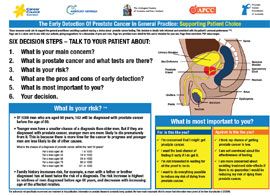The prostate is a small gland located below the bladder and in front of the rectum, which is part of the male reproductive system. It produces fluid that nourishes and protects sperm. However, as men age, they may face various prostate health issues that require early detection and appropriate treatment options.
Importance of Early Detection
Early detection of prostate health issues is crucial because many conditions, such as prostate cancer, have a higher chance of successful treatment when diagnosed early. Regular check-ups and screenings allow healthcare professionals to identify any potential problems and take appropriate action before the condition worsens.
Screening Options
Several screening options are available to detect prostate problems. One common method is the prostate-specific antigen (PSA) blood test, which measures the levels of PSA in the blood. Elevated PSA levels could indicate the presence of prostate cancer or other conditions such as prostatitis or an enlarged prostate. Another screening option is a digital rectal exam (DRE), where a healthcare provider manually checks the size, shape, and texture of the prostate by inserting a gloved finger into the rectum. These screening options should be discussed with a healthcare professional to determine the best approach for each individual.
Treatment Options
The treatment options for prostate health issues depend on the specific condition diagnosed. Here are some common treatment approaches:
1. Watchful Waiting
In cases where the condition is not causing significant symptoms or is slow-growing, healthcare professionals may recommend a strategy called watchful waiting. This involves monitoring the condition over time, with regular check-ups and tests, to see if intervention is necessary.
2. Medications
Medications can be prescribed to manage various prostate health issues. For instance, alpha-blockers may help relax the muscles around the prostate and urinary tract, easing symptoms of an enlarged prostate. In cases of prostatitis, antibiotics may be prescribed to treat any infection present. Your healthcare provider will determine the appropriate medications based on the specific condition and its severity.
3. Minimally Invasive Procedures
Minimally invasive procedures are another option for prostate health issues. Transurethral microwave therapy (TUMT) and transurethral needle ablation (TUNA) are two examples. These procedures use targeted heat or radiofrequency waves to reduce prostate tissue, alleviating symptoms of conditions like an enlarged prostate. They are considered less invasive than traditional surgery and often have quicker recovery times.
4. Surgery
In certain cases, surgery may be necessary to address prostate health issues. For instance, prostate cancer may require the complete removal of the prostate gland through a procedure called a radical prostatectomy. Other surgical techniques, such as transurethral resection of the prostate (TURP), aim to relieve symptoms by removing excess prostate tissue. Surgical options should be discussed in detail with a healthcare professional to ensure the best possible outcome.
In summary, early detection plays a crucial role in maintaining prostate health. Routine screenings, such as PSA tests and digital rectal exams, can help identify any potential issues early on. The treatment options vary depending on the specific condition diagnosed, ranging from watchful waiting and medication to minimally invasive procedures and surgery. Consulting with a healthcare professional is essential to determine the most appropriate course of action for individual cases.

